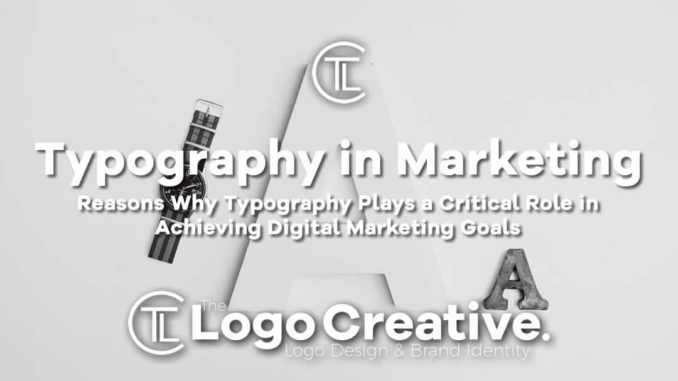
You know the feeling you get when you visit a website that tells you to stick around or hit the back button? This is before your brains comprehend the textual content. It instead is the font size, color, and style, the way everything is arranged that tells you how comfortable the overall design looks.
Many pay no attention to typography, they instead optimize their pages to feature the keywords they are targeting and concentrate on creating a content that’s useful and interesting.
Why is Typography Important for Digital Marketing?
When someone visits your page they do not immediately start to read the content without paying attention to everything else. They instead notice how the text is presented to them. Their brains make micro judgements by looking at the font style, size of the text, the spacing between blocks of texts, characters, words and lines. Based on these tiny observations, their brain decides what to do next. It all happens in a few seconds and subconsciously.
An example of a page with good typography is one that allows effortless reading and one that does not distract the readers and encourages them to read on.
This is where typography and digital marketing merge. The goal of most digital marketing campaigns is to generate conversions. It doesn’t matter how many people visit your page everyday if it doesn’t translate to sales.
By incorporating winning typographic practices, marketers can lead the traffic towards the end goal much more effectively.
When used correctly, typography can break up the text and create a sense of hierarchy. By using font size and type, audiences can retain the important points and follow the core message.
Typography also makes the overall design look more clutter-free. It eliminates distractions while highlighting the benefits and more importantly the call to action.
The implementation of good typography also allows the text to align with the natural reading patterns of human beings. Most readers scan chunks of texts and then pause to analyze what they just read. They decipher as they read along in this pause and read the pattern. Good typography practices take that into consideration and involve organizing the text in a manner that it aligns to the natural reading pattern.
4 Tips Typographic Tip for a Higher Conversion Rate
Bigger Font Size is Better
You want a font size that’s readable on both mobile and desktop. Considering that no one really complains about the font size being too big, you are better off with a bigger size. Make sure the font is 12 pixels or higher. A study by Wichita State University studied several popular font styles and their readability. For each font style, they considered three types of font sizes. It was revealed that fonts with 12-point sizes read the best.
Use 12-point font size for your text bodies (not for titles and headers). For your title and subheadings use much bigger font sizes for maximum impact.
Include Negative Space
A cluttered and text-heavy web page is often reason enough for low conversion rates. Break up the text and use short sentences to reduce fillers. Add plenty of whitespace by ensuring there is space between headlines and subheadings. Adding adequate space between lines of text also goes a long way into making things look cleaner and thus facilitates reading.
Select Serif Fonts for Greater Comprehension
Google and IBM conducted an eye tracking study to find out how font type and size influence reading online. The study not only proved that larger font sizes are easier to read but they also concluded that Serif fonts are easier to comprehend. They particularly tested Georgia (Serif Font) and found that it resulted in (San Serif).
Serif fonts also make texts look more official and serious. Any advice or suggestion written in Serif fonts would thus inherently be taken more seriously. This means the features and benefits of products and services written in this font type is likely to generate more responses.
Stay Clear of Fonts that Are Universally Hated
There are fonts that are universally hated or disrespected. No matter how good the content or valuable the information, these fonts can single-handedly make it look amateurish. Fonts like. Also, it makes sense to stay clear of fonts such as Papyrus and Courier. To ensure maximum reading comfort it’s also recommended not to include fonts that look like handwriting.
